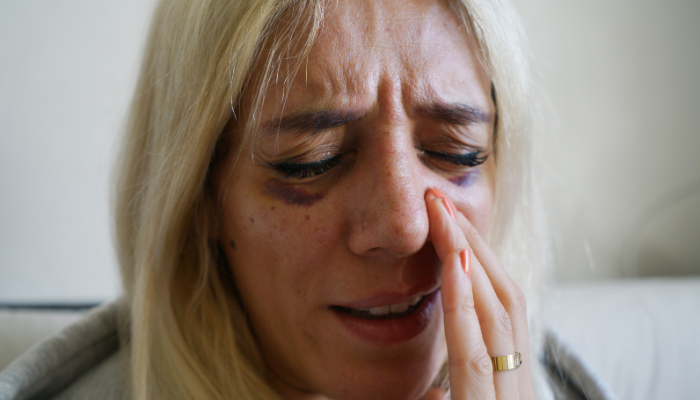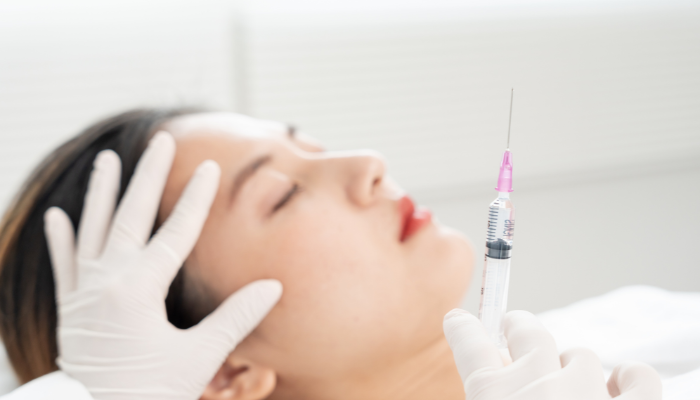Key Takeaways
- Common side effects of nose fillers include swelling, bruising, and redness, which usually fade within a few days.
- Serious complications, though rare, can occur and may include necrosis or vascular occlusion.
- Choosing a qualified practitioner is vital to minimise risks during the procedure.
- Proper aftercare is crucial for recovery and can help prevent complications post-treatment.
- If you experience any concerning symptoms, don’t hesitate to reach out to your practitioner for guidance.
Common Side Effects of Nose Fillers
 Nose fillers are really popular way to tweak your nose shape without surgery. But, like anything, it’s good to know what to expect, especially when it comes to side effects.
Most of them are pretty mild and go away quickly, but let’s get into the details so you’re fully prepared.
Nose fillers are really popular way to tweak your nose shape without surgery. But, like anything, it’s good to know what to expect, especially when it comes to side effects.
Most of them are pretty mild and go away quickly, but let’s get into the details so you’re fully prepared.
Understanding Minor Bruising and Swelling
Bruising and swelling are super common after nose filler. Usually, the worst of it is in the first 48 hours. After that, it should gradually get better over the next week or so. Everyone’s different, so some people might bruise more than others. Don’t panic if you look like you’ve had a tiny scuffle; it’s all part of the process.Managing Redness and Tenderness
Redness and tenderness are also pretty standard. Your nose might feel a bit sensitive to the touch, and the skin might look a little pink or red around the injection sites. This usually calms down within a few days. Over-the-counter pain relief can help if it’s a bit uncomfortable. Just follow the instructions on the packet, and you should be fine.Dealing with Temporary Asymmetry
Okay, so this one can be a bit worrying, but try not to stress too much. Sometimes, after fillers, your nose might look a little uneven. This is usually because of swelling, and it’s almost always temporary. Once the swelling goes down, things should even out. If it doesn’t, or if you’re really concerned, have a chat with your practitioner. They can usually sort it out with a little tweak.It’s important to remember that everyone’s experience with nose fillers is different. Some people might have more side effects than others, and that’s perfectly normal. The key is to be prepared, follow your practitioner’s aftercare instructions, and don’t be afraid to reach out if you have any concerns.
Rare and Serious Complications
Although rare, there can be more serious complications with nose fillers. Knowing about these means you can act fast if something isn’t right.Recognising Signs of Necrosis
Necrosis, or tissue death, is a really serious complication, and it happens when the blood supply to the tissue is disrupted. It’s not common, but it’s something you need to be aware of. Signs include:- Sudden, severe pain that’s way worse than what you’d expect.
- Skin that turns pale or mottled.
- Blisters or ulcers forming on the skin.
Understanding Vascular Occlusion
Vascular occlusion is when the filler blocks a blood vessel. This can stop blood flow and cause some real problems. It’s rare, but it’s crucial to know the signs. Here’s what to look out for:- Immediate, intense pain during or right after the injection.
- Skin turning white or very pale.
- A mottled or lace-like pattern appearing on the skin.
If you notice any of these signs, contact your practitioner immediately. Quick action can help prevent lasting damage.
Identifying Severe Allergic Reactions
While most people only experience mild reactions, some can have a severe allergic reaction to the filler. This is rare but can be life-threatening, so it’s important to know what to look for. Symptoms of a severe allergic reaction can include:- Difficulty breathing or wheezing.
- Swelling of the face, lips, or tongue.
- Hives or a widespread rash.
- Dizziness or loss of consciousness.
Post-Treatment Care for Nose Fillers

Essential Aftercare Instructions
First things first, listen to your practitioner! They’ll give you specific instructions tailored to your situation, and it’s vital you follow them closely. Generally, you’ll want to:- Avoid touching or putting pressure on the treated area for at least the first few days. This includes wearing glasses that sit on your nose.
- Skip strenuous exercise for 24-48 hours. Anything that gets your heart pumping too hard can increase blood flow to the face and worsen swelling.
- Stay out of saunas, steam rooms, and very hot showers for a few days. Heat can also ramp up swelling.
Tips for Reducing Swelling
Swelling is pretty normal after nose fillers, but there are things you can do to minimise it. Applying a cold compress (like an ice pack wrapped in a cloth) for about 15 minutes at a time, several times a day, can work wonders. Also, try to sleep with your head elevated on an extra pillow or two. This helps drain fluid away from your face.When to Contact Your Practitioner
Most side effects are mild and temporary, but it’s always better to be safe than sorry. Get in touch with your practitioner straight away if you notice any of the following:- Severe pain that doesn’t go away with over-the-counter pain relief.
- Signs of infection, like increased redness, warmth, or pus.
- Any changes in skin colour, especially if it looks pale or blotchy.
Remember, addressing complications early is key to achieving the best possible outcome. Don’t delay seeking professional help if you notice any concerning signs or symptoms after your nose filler treatment.
Long-Term Effects of Nose Fillers
Potential for Prolonged Swelling
So, you’ve had your nose filler, and you’re loving the initial results. But what about the long haul? One thing to keep in mind is the potential for prolonged swelling. It’s not super common, but it can happen, especially if you had a bit of a reaction initially or if a larger amount of filler was used. Usually, this swelling isn’t painful, more of a persistent puffiness. If it hangs around for more than a few weeks, it’s worth chatting with your practitioner, just to be on the safe side.Understanding Asymmetry Over Time
Okay, let’s talk about asymmetry. Initially, everything might look perfectly balanced, but over time, things can shift a little. This can happen for a few reasons, like the filler settling differently on each side or your body absorbing it unevenly. It’s usually subtle, but you might notice one side looking slightly different from the other. Don’t panic! It’s often correctable with a little tweak from your practitioner. Regular check-ups can help catch this early.Need for Maintenance Treatments
Here’s the thing about nose fillers: they’re not a one-and-done deal. Most fillers are temporary, meaning they’ll eventually break down and be absorbed by your body. This means you’ll need maintenance treatments to keep up the look you’re after. How often? Well, it varies depending on the type of filler used and how your body reacts to it, but generally, you’re looking at every 6 to 12 months. Think of it like getting your hair coloured – it needs a touch-up every now and then!It’s important to remember that everyone’s experience with nose fillers is unique. What works for one person might not work for another. Open communication with your practitioner is key to managing expectations and addressing any concerns that may arise over time.
Managing Pain and Discomfort
 Let’s be honest, nobody really enjoys pain, right? After getting nose fillers, it’s normal to feel a bit of discomfort. But don’t worry, there are several ways to manage it and make yourself more comfortable.
It’s all about finding what works best for you and following your practitioner’s advice.
Let’s be honest, nobody really enjoys pain, right? After getting nose fillers, it’s normal to feel a bit of discomfort. But don’t worry, there are several ways to manage it and make yourself more comfortable.
It’s all about finding what works best for you and following your practitioner’s advice.
Using Topical Numbing Creams
Before the procedure, your practitioner likely used a numbing cream to minimise pain during the injections. You can also use these creams afterwards to help with any lingering discomfort. Just make sure to follow the instructions carefully and don’t apply too much. It’s a good idea to chat with your practitioner about which creams they recommend and how often you can use them.Over-the-Counter Pain Relief Options
For many people, over-the-counter pain relief is enough to manage any post-filler discomfort. Paracetamol is usually a good choice, but it’s best to avoid ibuprofen or aspirin, as these can thin your blood and potentially increase bruising. Always stick to the recommended dosage and if you’re unsure, have a quick word with your pharmacist or practitioner.Natural Remedies for Discomfort
If you prefer a more natural approach, there are a few things you can try. Some people find that applying a cold compress can help to reduce swelling and numb the area. Others swear by gentle massage to ease any tension. Just be super gentle and avoid putting too much pressure on your nose.Remember, everyone’s pain threshold is different, so what works for one person might not work for another. The key is to listen to your body and find the methods that bring you the most relief. And if you’re ever concerned about the level of pain you’re experiencing, don’t hesitate to contact your practitioner. They’re there to help!
Minimising Risks During Treatment
Nose fillers are generally safe, but it’s important to take steps to minimise any potential risks. It’s all about being informed and proactive. Let’s look at how you can make the process as safe as possible.Choosing a Qualified Practitioner
This is probably the most important thing you can do. Always choose a qualified and experienced practitioner in administering nose fillers. Check their credentials, read reviews, and don’t be afraid to ask about their experience. A skilled practitioner will have a thorough understanding of facial anatomy and injection techniques, which significantly reduces the risk of complications. It’s worth paying a bit more for someone who knows what they’re doing.Discussing Medical History
Be open and honest with your practitioner about your medical history. This includes any allergies, medications you’re taking, and previous cosmetic procedures. Certain medical conditions or medications can increase the risk of complications with nose fillers. Providing a complete medical history allows your practitioner to assess your suitability for the procedure and tailor the treatment accordingly. It’s better to be safe than sorry, so don’t leave anything out.Understanding Injection Techniques
Make sure you understand the injection techniques your practitioner will be using. Ask them to explain the process and why they’re using a particular technique. Different techniques carry different risks, and it’s important to be aware of these. For example:- Serial Puncture Technique: Multiple small injections. Good for precise placement but can increase bruising.
- Linear Threading Technique: Injecting filler as the needle is withdrawn. Useful for filling larger areas.
- Bolus Injection: Injecting a small amount of filler in one spot. Can create a more defined result but needs careful placement.
It’s also worth asking about the type of filler they’re using. Hyaluronic acid fillers are generally considered the safest option, as they can be dissolved if there are any problems. Make sure you’re comfortable with the practitioner’s approach before proceeding.
Emotional Impact of Side Effects
Look, it’s easy to focus on the physical aspects of nose filler side effects, but let’s not forget the emotional rollercoaster some people experience. It’s normal to feel a bit anxious or down if things don’t go exactly as planned.Coping with Post-Procedure Anxiety
That initial period after getting nose fillers can be a bit nerve-wracking. You’re constantly checking for changes, worrying about swelling, and wondering if you made the right decision. It’s important to remember that some anxiety is completely normal. Here are a few things that might help:- Distract yourself with activities you enjoy.
- Practise relaxation techniques like deep breathing or meditation.
- Talk to a friend or family member about how you’re feeling.
Building Confidence Post-Treatment
Sometimes, even if the procedure goes well, it can take a little while to adjust to your new look. Confidence doesn’t always appear overnight. If you’re struggling to feel good about your appearance, try these:- Focus on other things you like about yourself.
- Experiment with new makeup or hairstyles to complement your new nose shape.
- Remember why you decided to get fillers in the first place.
Seeking Support from Professionals
If you’re feeling overwhelmed or your anxiety is persistent, don’t hesitate to reach out to a professional. A therapist or counsellor can provide you with tools and strategies to manage your emotions and build your self-esteem. It’s not a sign of weakness; it’s a sign that you’re taking care of yourself.Remember, your mental well-being is just as important as your physical health. If you’re struggling emotionally after your nose filler procedure, seeking professional help is a positive step towards feeling better. There are people who care and want to help you through this process. You’re not alone.
Conclusion
Understanding the potential side effects of nose fillers is vital for anyone considering this treatment. While many individuals enjoy positive results, it’s important to be aware of the common issues like swelling and bruising, which usually resolve with proper care. Serious complications, although rare, can occur, making it essential to choose a qualified practitioner. By following aftercare instructions and being mindful of your body’s responses, you can significantly improve your experience. Remember, if you have any concerns, don’t hesitate to reach out to a qualified practitioner for guidance. Taking these steps can lead to satisfying results and a more confident you.Frequently Asked Questions
What are the usual side effects of nose fillers?
After getting nose fillers, you might notice some swelling, bruising, and redness. These effects usually fade away within a few days.
Can nose fillers lead to serious issues?
Yes, while most side effects are mild, there are serious risks like skin necrosis and infections. It’s important to watch for unusual symptoms.
How can I reduce swelling after getting nose fillers?
To lessen swelling, apply ice packs, keep your head raised, and avoid heavy exercise for a few days. Staying hydrated also helps.
Are the results from nose fillers permanent?
No, the results are not permanent. Most fillers last between six to twelve months before you need to get more.
What should I do if I experience severe pain after treatment?
If you feel severe pain, contact your practitioner right away. They can help assess the situation and provide guidance.
How can I find a good practitioner for nose fillers?
Look for a qualified and experienced practitioner. Check their reviews and ask about their training to ensure you’re in safe hands.




